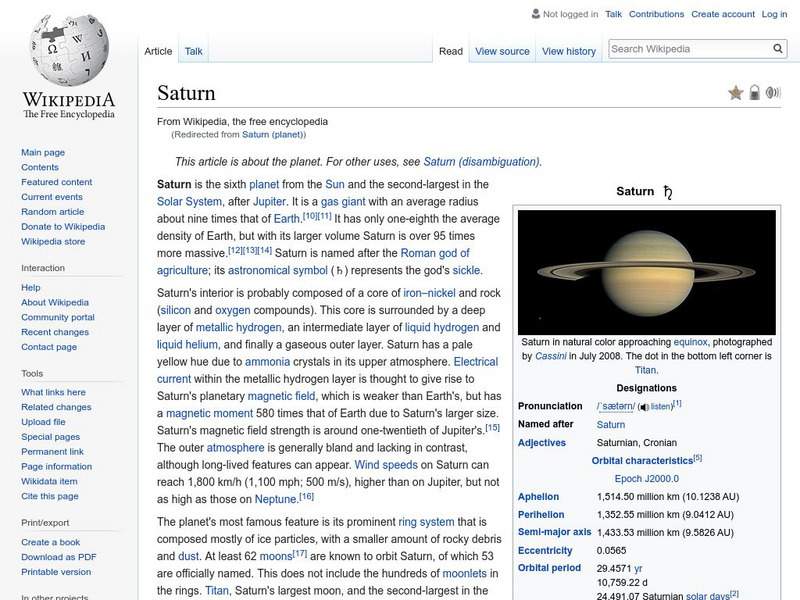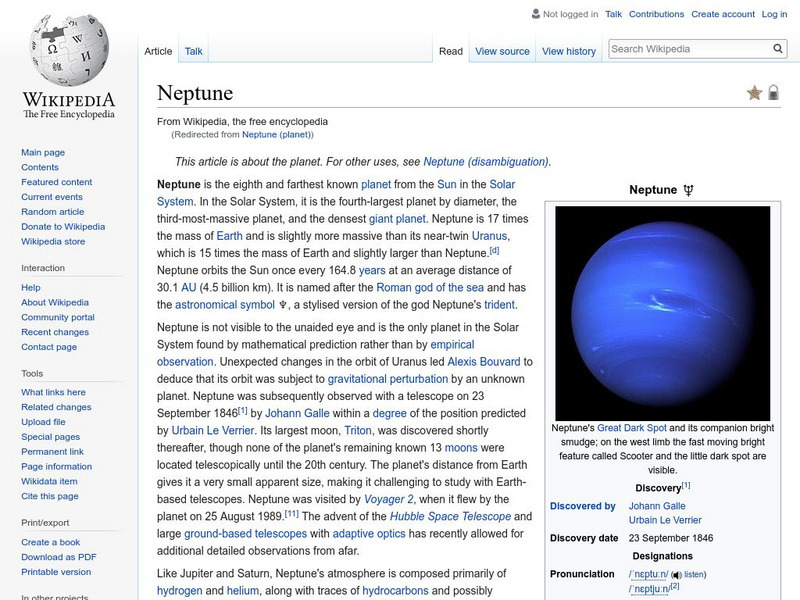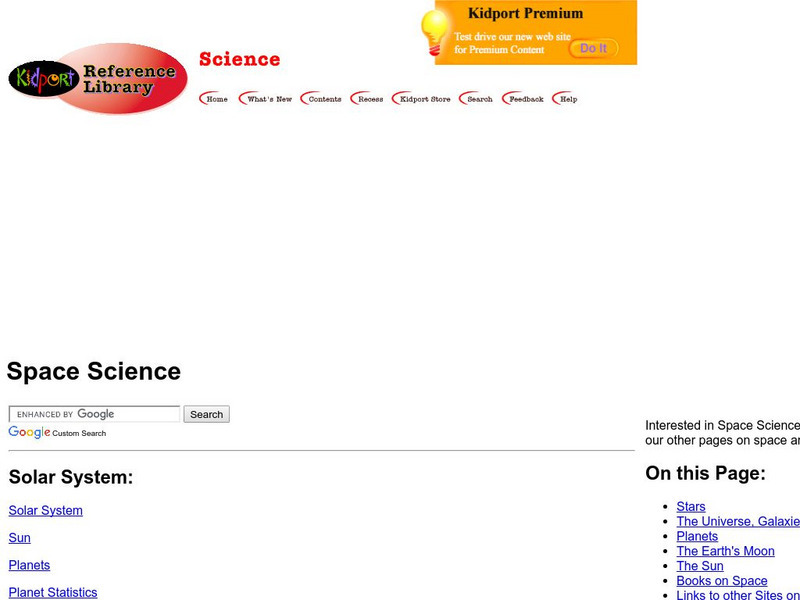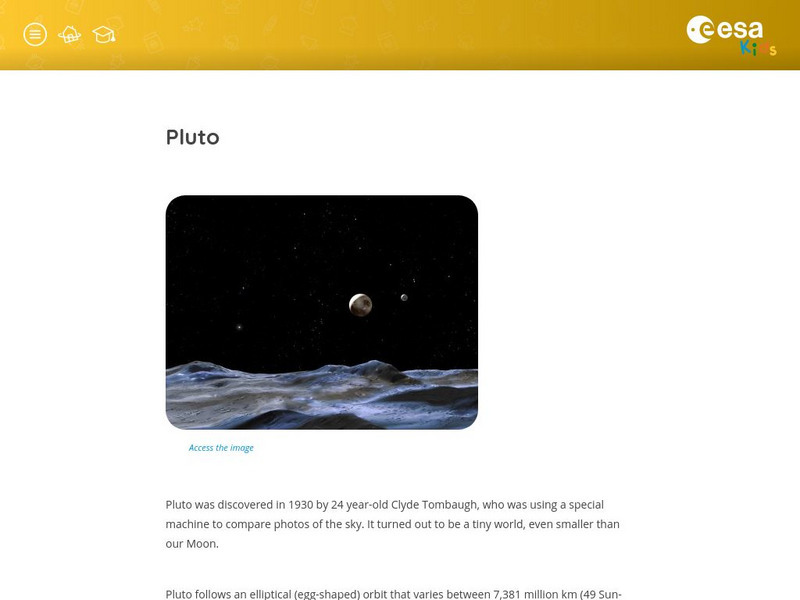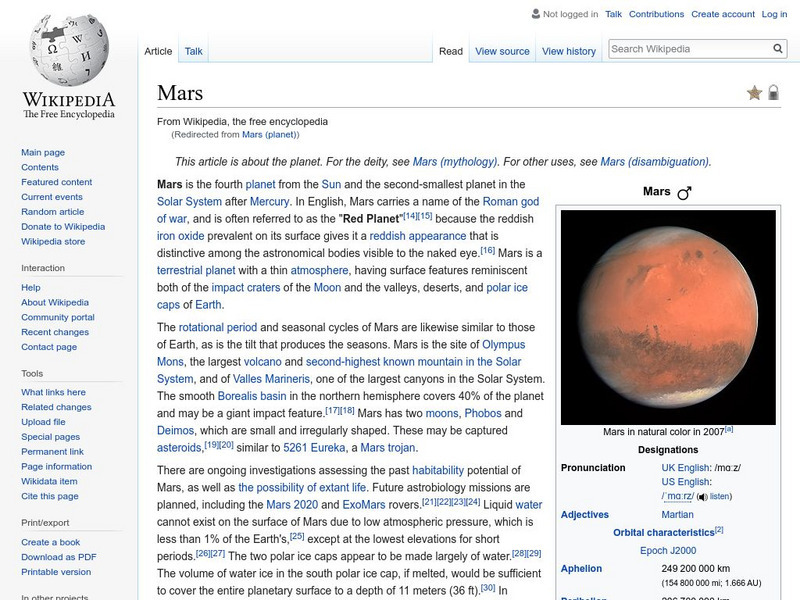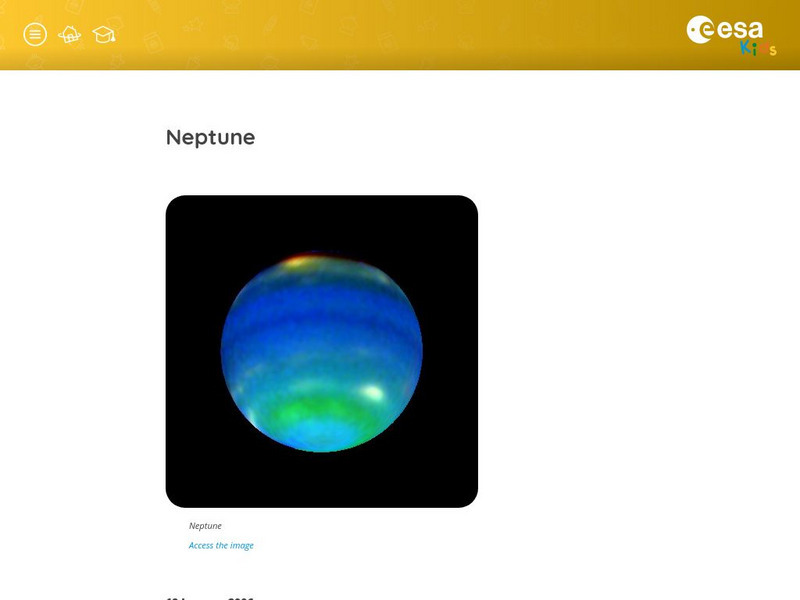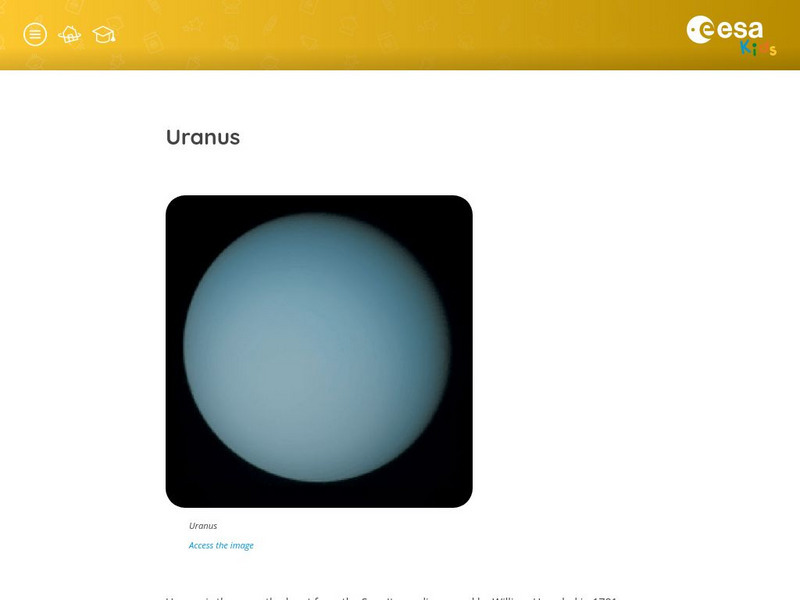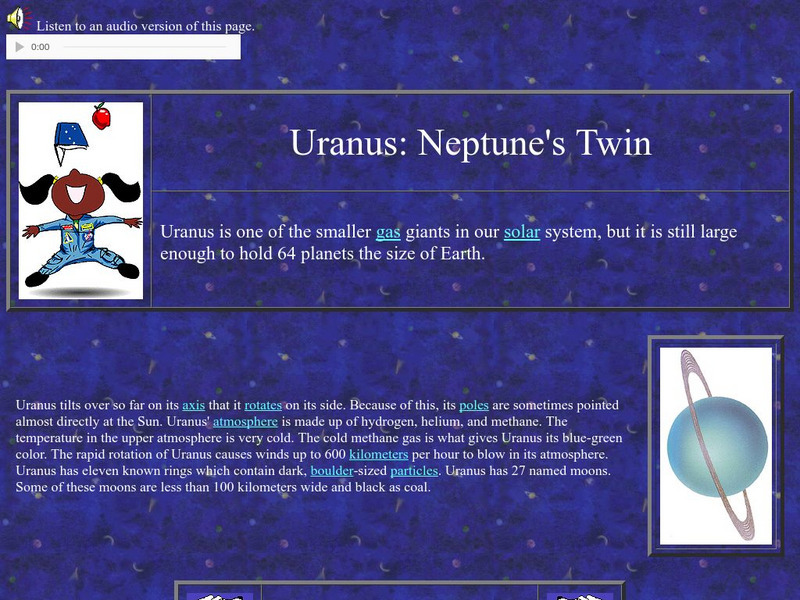Other
All (Known) Bodies in Our Solar System Larger Than 200 Miles in Diameter
How big is the Earth compared to the Sun? Is Mars bigger than the Moon? Seeing all bodies in the solar system larger than 200 miles in diameter side by side provides an excellent comparison and an interesting perspective.
Curated OER
Artist's Concept of the 10th Planet and Its Moon (R Hurt, Ipac)
In mythology, it was Eris that sparked the quarrel ultimately resulting in the Trojan War. It was fitting then that Michael Brown of the California Institute of Technology should name this highly debated object Eris. Learn more about...
NASA
Goddard Education: Eclipse 99
Information is provided about the eclipse of 1999; in addition, facts about elcipses throughout history are also included.
Other
Sea and Sky: A Tour of the Solar System
Take a virtual tour of the solar system starting with detailed information about the sun.
Unite for Literacy
Unite for Literacy: Earth and Sky: The Night Sky
Read about the sights you can see in a clear night sky. Book includes audio narration in 16 additional languages with text in English.
NASA
Nasa: Welcome to From Earth to the Solar System (Fettss)
A collection of high-resolution images of space. Images "showcase the discoveries and excitement of planetary exploration, with a focus on the origin and evolution of the Solar System and the search for life".
Wikimedia
Wikipedia: Jupiter
Wikipedia, a publicly-maintained encyclopedia, provides information on the planet Jupiter, including physical characteristics, exploration, moons, comet impact, and more.
Wikimedia
Wikipedia: Saturn
Wikipedia, a publicly-maintained encyclopedia, provides information on the planet Saturn, including physical characteristics, exploration, rings, moons, and more.
Wikimedia
Wikipedia: Uranus
Wikipedia, a publicly-maintained encyclopedia, provides information on the planet Uranus, including physical characteristics, exploration, moons, and more. Links are included to additional information.
Wikimedia
Wikipedia: Neptune
Wikipedia, a publicly-maintained encyclopedia, provides information on the planet Neptune, including physical characteristics, exploration, moons, and more. Additional links provided.
Physics Classroom
The Physics Classroom: Circular and Satellite Motion: Gravitational Fields
Students discover the Law of Universal Gravitation by changing the masses of planets and moons and the distance that separates them.
Kidport
Kidport: Space Science
This complete resource will help students to improve their understand of space exploration. Includes images of the universe, galaxies, stars and planets.
Smithsonian Institution
Smithsonian Learning Lab: The Universe, an Introduction
Start with the questions all students ask: How big is the universe, how far away are the planets and stars, how did they form and when, how do they move and why? Build on their natural curiosity. The Smithsonian, in cooperation with...
Other
Astromador: Astronomia Para Amadores
This resources focuses exclusively on astronomy. It's packed with historical facts about space exploration, famous people who pioneered the study of stars and planets. It features chronological list of space exploration, current news,...
European Space Agency
European Space Agency: Esa Kids: Our Universe: Pluto
A basic overview of the dwarf planet Pluto. Links to information about the other planets and objects in our solar system are included.
Wikimedia
Wikipedia: Mars
Wikipedia, a publicly-maintained encyclopedia, provides abundant information on the planet Mars.
European Space Agency
European Space Agency: Esa Kids: Our Universe: Neptune
A basic overview of the planet Neptune. Links to information about the other planets and objects in our solar system are included.
European Space Agency
European Space Agency: Esa Kids: Our Universe: Saturn
A basic overview of the planet Saturn. Links to information about the other planets and objects in our solar system are included.
European Space Agency
European Space Agency: Esa Kids: Our Universe: Uranus
A basic overview of the planet Uranus. Links to information about the other planets and objects in our solar system are included.
Cosmos 4 kids
Cosmos4 kids.com: Solar System Details
This comprehensive site delves into other aspects of our solar system besides the planets and the sun. Click on the topics on the right like solar winds, the heliosphere, the heliopause, asteroids, comets, and more.
E-learning for Kids
E Learning for Kids: Science: Seychelles: What Is the Solar System?
In this lesson, students learn about the planets, their moons, asteroids, comets, and dwarf planets in our solar system.
NASA
Nasa Science: For Kids: Solar System Fun
Test your knowledge about the solar system with games and activities designed to help explore what you know about the sun, the planets and their moons, space rocks, the Milky Way, and related topics.
Other
Uppsala Astronomical Observatory: Planetary Imaging
Images of Mercury, Venus, the Moon, Mars, and Jupiter by the Swedish Vacuum Solar Telescope.
NASA
Nasa Star Child: Uranus, Neptune's Twin (Level 1)
Get to know the twin of Neptune with this introduction to Uranus. Listen to the information in an audio file. Features include a printable version of the page, and vocabulary words are linked to a glossary of terms.






